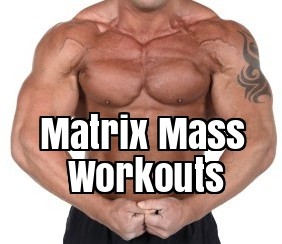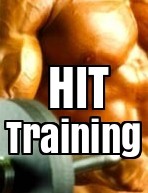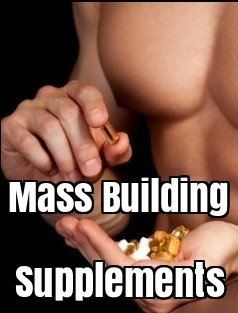

Click Here For Your Free Bodybuilding Magazine
Volume vs Intensity Bodybuilding
High intensity or volume training?
The argument still goes on and on. The two training camps, volume training and high intensity training, first became delineated when back in the 1970's Arnold Schwarzenegger was recommending 20 sets per bodypart for maximum growth while Mike Mentzer recommend only one set to failure for each bodypart. That battle over bodybuilding training theory is still raging today. But who is right and who is wrong? To find out, let's explore training intensity for a moment.
Weight training intensity is: the amount of work/effort per unit of time. This means if you're used to performing 10 sets in 20 minutes, if you increase your sets to 15 in the same 20 minutes, then you've increased your intensity by 50% as long as you lifting the same weights. Using this same example, if you increase the amount of weight (more effort) then you've also increased training intensity. Finally, if you use the same weight, the same number of sets in the same amount of time, but you push each set with more repetitions, then you've also increased intensity.
You can readily see that each of these methods has it's limits. One practical point to make clear is that you should attempt to perform the most amount of work and generate the greatest effort in the least amount of time. We recommend the ideal training time to be limited to 45 minutes based on blood tests indicating optimum hormonal peaks.
Idealistically speaking, after you've warmed up, you can generate the most intensity and effort from you first set than you can from your tenth. This means two things. Perform your first set carefully because this is when you're strongest and most likely to injure yourself. Severe injuries rarely happen on the final set because your ability to generate force is at it's lowest level. When you injure yourself on that last set, it's usually mental fatigue more then muscular fatigue. Secondly, work your weakest or high priority bodyparts first, when you're strongest. Another point to make is not everyone can generate maximum effort on that very first work set. Some trainees take several sets to "get into the rhythm" which works perfectly fine. Pyramiding up in weight and effort works great, for many, as long as there's an on-going push to reach peak performance as quickly as possible.
So, how many sets do you need to stimulate growth? Isn't this the question you really want answered? Unfortunately, the answer is, it depends. It depends on how much effort you can muster up. According to some high intensity advocates, one set is all that's required or pretty close to it. My question is, how many people can take one set to all-out, "as if your life depended on it" absolute failure, where the muscle can't contract for one more millisecond? In my 20+ years of experience, I have found that not many can. You usually need at least 2-5 sets to really create a deep muscle burn. For people with low pain threshold, the super intensity approach is out of the question. It may require them a few more sets because with lower training intensity you need a bit more volume.
Ultimately, training experience is your best guide. Try this method. After you've reached your peak weight and maximum number of reps for a specific movement, see if you can perform another set exactly the same way. If you can, then your initial effort wasn't high enough and the next time you train either go heavier or perform more reps. If you can't, don't waste energy doing any more sets. You've provided an optimum growth stimulus and you should move on to the next exercise. If you're goal is to train as intensely as possible, this method will give you a way to gauge your performance.
For the best muscle building workouts with the ideal balance of volume and intensity checkout Matrix Mass Training.
Click Here For Your Free Bodybuilding Magazine
Bodybuilding Guide | High Intensity Training | Supplements | Articles | Tips | Links | Contact
Disclaimer: This information presented is intended to be used for educational purposes only. The statements made have not been evaluated by the Food and Drug Administration (U.S.). These products are not intended to diagnose, treat, cure or prevent any condition or disease. Please consult with your own physician or health care practitioner regarding any suggestions and recommendations made.

